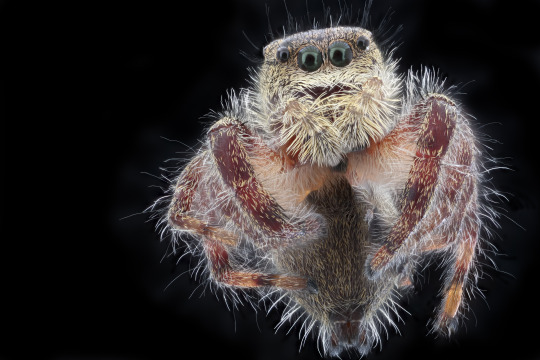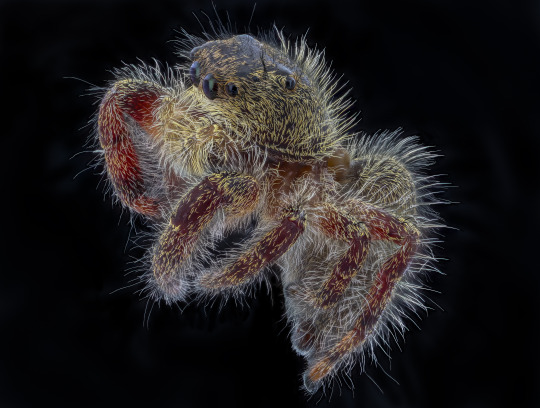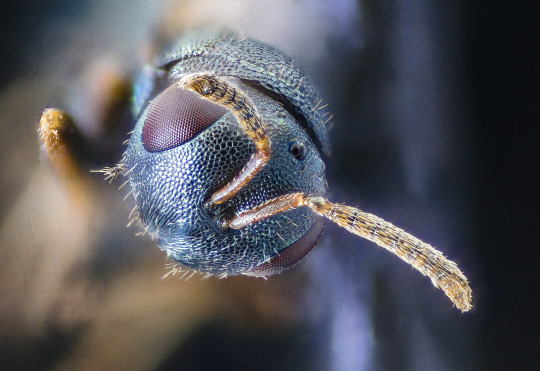#northeastmaglev
Photo


Plague Doctor Beetle. Or so technician Andres Croft has christened this unknown weevil. I can see his point. I also see the point of not knowing which weevil thi sissince there are 256 known species in Maryland and that number continues to climb. And, I would also like to point out that like so many other small things we share the planet with small does not mean not beautiful ("not mean not" what a lovely symmetrical double negative). Weevils do not tend towards not dull colors (! Experimental Grammar Warning !), but do not not (!EGW!) array themselves in patterned and colored hairs, craft their bulbous shapes into pleasing heavy weight shapes, and often have long "snouts" and cute antennae. Proudly, the Bee Lab again goes over the cutting edge with new combinations of grammar and anthropomorphic coding. Oh, this also comes from the land that will be the MAGLEV trainyard site.
#weevils#weevil#maglev#northeastmaglev#scmaglev#bwmaglev#dark#masked#plaguedoctor#freudian#senator#date#crazy#steelyeyed#vent#eliminator#curculionidae
68 notes
·
View notes
Photo

Join me at Dino Tracks and the MAGLEV NHSM Fossil Club Nov. Mtg http://meetu.ps/e/JvcX7/JLwCv/a #maglevtrain #maglev #maglevboard @nasagoddard @nasa @northeastmaglev #dinosaur #dinosaursofinstagram #dinosaur #dinosurprotectiongroup #dinosuartracks Please read about the meetups! We are trying to protect federal research lands from development and no research on the geology or ecology or survey for anything really needs to be done ASAP we need help! None documented land really. (at Patuxent Research Refuge) https://www.instagram.com/p/CHL2zi_jjkN/?igshid=1gvr7i4xh5288
0 notes
Photo


Jumping Spiders are difficult for me to ignore. Here is a relatively large specimen collected a few days ago on the Beltsville Ag Center BARC West 200 acre proposed MAGLEV site. This mini-aliens will remain active until a hard freeze does them in. Photo by Elizabeth Panner, new in the lab and working on her photo chops.
#spiders#maglev#scmaglev#northeastmaglev#bwmaglev#spider#jumping spider#salticid#salticidae#flying spider#penguin#teddy bear
47 notes
·
View notes
Photo


Parasitic Wasp of the micro-hymenopteran type. A lurking micro-hymenopterist will surely narrow this down to some sort of group, but I am out of my comfort zone here, so will leave as a micro-hym. Note the size of the pin it is glued to. From the North Tract of Patuxent Wildlife Research Center. One of the locations that would be impacted if the MAGLEV train is placed onto refuge lands. An important sand lens region full of both prairie plants under the powerlines and globally rare pitch pine barrens. Photo by Anders Croft. A dreamy sort of wasp, not an angry type, not the mouthless appearance.
32 notes
·
View notes
Photo

Found on the MAGLEV trainyard proposed site on USDA Beltsville Research Center. Jumping spiders are so charasmatic. So, here another one. Note that the flash was set to the front of our lightbox and so you can see is reflection in 4 of its 8 eyes. Photo by Jade Louis.
26 notes
·
View notes
Photo

The I Don't Know What Kind of Wasp This is Wasp. Yup, it is small and I don't have a side shot so I can vibe the wings and body shape. Small to tiny and nicely arrayed face with very long hairs. Looks different from the normal wasp, and it is just yet another example of how wasp and other insect models are often hidden (well, not hidden, just unobserved) from the public eye (or is it just my eye?). Good thing we aren't in charge of specing out biodiversity... all these webs, systems, miniaturization, design features, addons, color schemes, engineering (wings are particularly tricky), fuel efficiency, self repair functions, miles per calorie, calibration, automatic danger warning systems, food and sex sensors, weaponry, armor, camoflauge, vertical surface ascenders, gps mapping with thousands of waypoints, 6 point articulating traction devices, and so much more in those tiny packages. Another small specialized creature currently found on the proposed 200 acre Maglev trainyard site on our research station. Photo by Anders Croft
20 notes
·
View notes
Photo


Basic small ant from MAGLEV impact zone on Beltsville Agriculture Research Center. For something so small there is a lot of architecture going on here. I imagine it is identifiable to species. Perhaps a Myrmica? In addition to just the unbelievable numbers of individuals per acre there are 128 species known from Maryland alone. The amount of energy that passes through the ant kingdom with their endless toil spent tending, eating, rototilling the leaf letter, eating vegetation, perforating the soil, eating other insects and providing food, forage, and parasitism possibilities for all sorts of other creatures is worth a meditation on the scale of the individual human versus an ant. Reminds me of one of my favorite Twain quotes (referring here to the ultrafamous Admiral Nelson of 100 years ago...).
"Nelson would have been afraid of ten thousand fleas, but a flea wouldn't be afraid of ten
thousand Nelsons."
- Mark Twain
oh, photo by the inimitable Cole Cheng. And yes, all ants will be gone if the MAGLEV is built.
#maglev#nemaglev#northeastmaglev#bwmaglev#scmaglev#ants#ant#pin#sculpturing#ripped#buff#detailed#insects#insect
33 notes
·
View notes
Photo



Darn it...I misidentified this species...this is: Urophora quadrifasciata
#maglev#northeastmaglev#scmaglev#bwmaglev#fruit fly#apple maggot#fly#flies#black and white#wings#fancy eyes#tiny#micro#extreme macro
31 notes
·
View notes
Photo

Psyllid? Bark Louse? Not sure, not a group I know much about, so many things like this out there in our environments. Found while sweeping the vegetation of the powerlines that are may be impacted by the MAGLEV train...fabulous in the breadth of small creatures living there. Photo by Jade Louis.
29 notes
·
View notes
Photo


Ants, as an insect group, foster secret, somewhat mysterious, fanatical groups. Who are these people? Ants are not apparently sexy to the outside world, no fuzzy huggable species like the bumble bee, no beautiful colors like butterflies, beetles, etc; they are are all basically some sort of earth color, all are small to minute and their characters are microscopic. Yet, there are books, guides, camps, the clannish "AntWeb"; museums are full of ant people, the Maryland Biodiversity site lists 128 species in the state and someone who is undoubtedly part of the ant secret society has put up a picture of every single one of them, while most other insect groups have only a handful with pictures. Here is a red one from the BARC-WEST proposed Maglev Train Yard site. Someone from the Kabbalah will speak its name. Photo by Jade Louis.
25 notes
·
View notes
Photo

Do not hate the stink bug. This looks like the most hated of stink bug, the brown-marmorated one. But yet, it more certainly our native Dusky Stink Bug (Euschistus tristigmus) (hmm, what do I mean by "our", it implies ownership, yet do we really own wild things?). Anyway, another plant sucker. Check out the sharp-shoulders. Think about plants, they can't move, they appear to be completely defenseless to anything that wants to eat them up, sip their fluids, burrow in or other wise use in unfriendly ways. Just think if you were chained to a tree...how long would you last? (probably not a good analogy, but an intriguing thought exercise in any case, it is Sunday morning after all, time for introspection). Photo by Jade Louis. MAGLEV trainyard
28 notes
·
View notes
Photo



Tiny, flat, long and beetle. As I look at specimens of plants and animals from our biodiversity sampling of the MAGLEV trainyard sites on our research facilities, I realize how little I really know about species other than bees. I have no idea where to begin to identify this beetle. IDbioplexity. This species is approximately 3mm long and found by sweeping a lot of vegetation in October, primarily in open fields. Chrysomelidish? I am learning to appreciate the vastness of the book of Nature, only a little of which I can read. Photo by Elizabeth Planner.
16 notes
·
View notes
Photo

Think about crickets. At this time of year (in the Eastern N. Am.) you can go outside on any warm night and you will hear choruses of many different species. Some, you can't hear because their calls are so upregister. A few don't call. They process leaves, dead things, shred the environment, provide food, and lilt our environment with their song. The audio counterpart of flowers. . Photo by Anders Croft.
#maglev#nemaglev#northeastmaglev#scmaglev#cricket#crickets#orthoptera#herbivore#detritivore#round head#bug eyed#brown#compound eyes#sound#like#symphony#song
29 notes
·
View notes
Photo



I feel like this is the Common House Spider (Parasteatoda tepidariorum), but my spider senses aren't that acute (get it?). Anyway it clearly was on the site on the site the USDA National Honey Bee Lab where they have research buildings not houses. Back to this spider, in evolutionary history, this spider would have pre-dated (not "predated") the invention of "houses" so we will give that one to them. I am feeling ironic and very sad at the same time. Photo by someone in the lab who did not fill out the photo spreadsheet.
#maglev#northeastmaglev#scmaglev#bwmaglev#spiders#spider#barc#arachnid#house spider#web#sticky#glove#globe#globular#legs#eight legs#fragile
25 notes
·
View notes
Photo

Stirellus bicolor - Bluestem sucker. Leafhoppers can be picky. Some suck sap from almost anything, others, like our gold and purple friend here stick with one group. Lots of them are grass specialists, eastern grasses have loads of leafhoppers and often dominant counts of the things that hang around plants above ground (you know those things...). Oh, and they range from pretty to beautiful, lots of designers could take a lesson. Check the 150 some species most with pictures on the Maryland Biodiversity site. And, MAGLEV 200 acre site.
#maglev#northeastmaglev#bwmaglev#scmaglev#leafhopper#black#gold and black leafhopper#bluestem#stirellus#black background
21 notes
·
View notes
Photo

Am guessing this is one of the long-jawed orbweavers (Tetragnatha), check out the long jaws and what appear to be some sort of specialized palps? Just another successful experiment by our friend Nature found on the proposed MAGLEV trainyard. Photo by Jade Louis.
#maglev#northeastmaglev#scmaglev#bwmaglev#highspeed train#bullet train#maryland#spiders#spider#orbweaver#long jaw#fangs#eight eyes#scary
22 notes
·
View notes